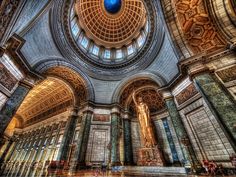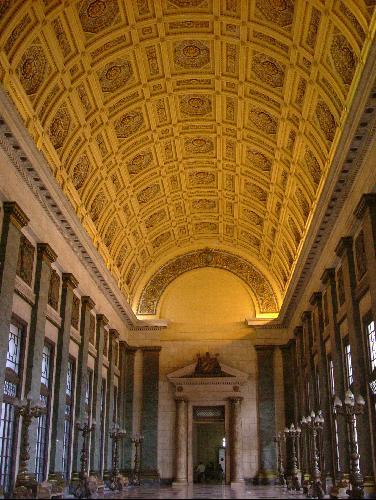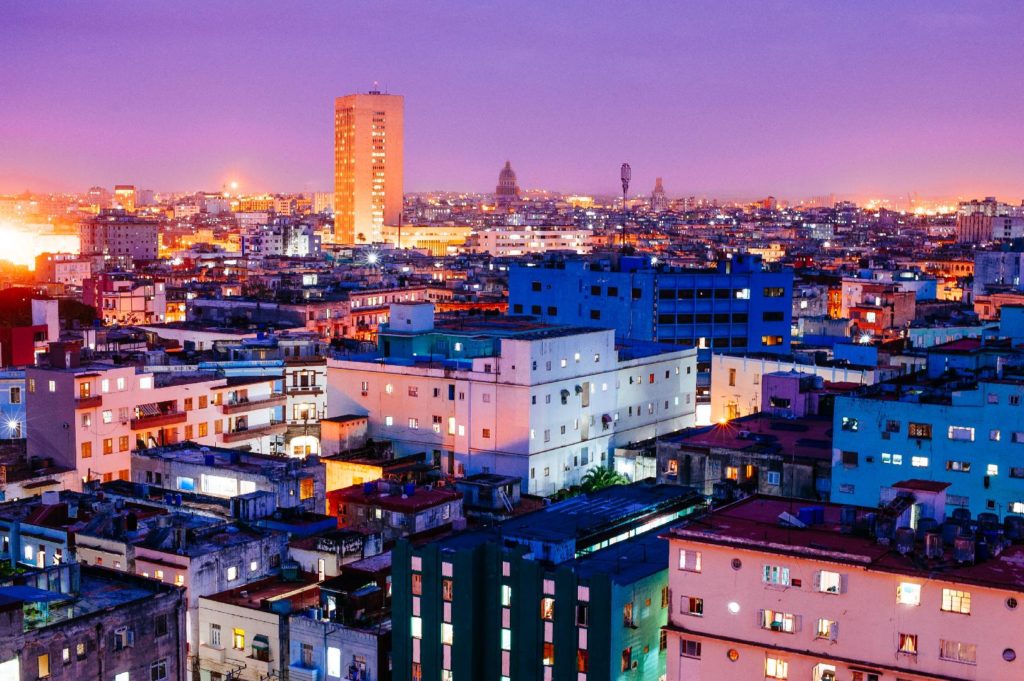 RUSSIA WILL PAY FOR THE RESTORATION OF THE GOLD COVER OF THE CUBAN CAPITOL.
RUSSIA WILL PAY FOR THE RESTORATION OF THE GOLD COVER OF THE CUBAN CAPITOL.
The Russian government will pay with federal funds the restoration works of the gold coating of the dome of the National Capitol of Havana, the Sputnik news agency reported.
According to the materials published in the Public Purchases portal of the Russian Government, the Kremlin administration chose the contractor who will be responsible for doing this work, although Sputnik did not provide details about the chosen company.
The contract amounts to 642.4 million rubles or about 9.6 million dollars at the current rate.
The works must conclude in November 2019, when the capital of Cuba will celebrate its 500th anniversary.
The project should include solutions to strengthen the structure of the dome and its coating with natural stone (sandstone), the coating with new bronze plates and its coating with sheets of gold leaf.
In 2017, the state-owned company Goszagran Sobstvennost, from the Management Board of Russian President Vladimir Putin, had called for a project contest for the restoration of the gold layer of that dome.
Nearly a year ago, in addition, the Russian institute Bering-Bellingshausen for the Americas (IBBA), based in Montevideo, had proposed to the Russian diamond factory in Smolensk that it give the Cuban government a diamond for the Capitol.
THE CUBAN CAPITOL.
The National Capitol of Havana was built in 1929 and before the accession to power of Fidel Castro, in January 1959, it was the seat of the House of Representatives and the Senate of the Republic.
Its architecture resembles the building of the same name in Washington but, according to tourist guides, Cubans are proud that their Capitol is higher.
In the last decades the Capitol was occupied by the Academy of Sciences and then by the Ministry of Science, Technology and Environment, until its closure for the restoration work.
After the remodeling, the building is expected to regain its functions as the seat of the National Assembly, although since November 2016 some of its facilities have been partially reopened, which function as offices of that assembly, and since March of this year several of its areas they were reopened to the public.
However, the plenary meetings of the National Assembly are still being held at the Palace of Conventions, with the capacity to house the more than 600 deputies related to the Communist Party.
The Capitol of Havana is considered as the third in importance for its volume and the only one of those characteristics built in the twentieth century.
The building is inspired by the United States Capitol, St. Peter’s Basilica of the Vatican and the Pantheon of Paris, with a dome of 91.72 meters in height.
Restoration work continues in the southern part of the Capitol and is expected to conclude in November 2019, to celebrate the 500th anniversary of the founding of Havana.
 RUSIA PAGARÁ POR LA RESTAURACIÓN DEL REVESTIMIENTO DE ORO DEL CAPITOLIO CUBANO.
RUSIA PAGARÁ POR LA RESTAURACIÓN DEL REVESTIMIENTO DE ORO DEL CAPITOLIO CUBANO.
El Gobierno de Rusia pagará con fondos federales las obras de restauración del recubrimiento en oro de la cúpula del Capitolio Nacional de La Habana, informó la agencia de noticias Sputnik.
Según consta en materiales publicados en el portal de Compras Públicas del Gobierno ruso, la administración del Kremlin eligió al contratista que se encargará de hacer ese trabajo, aunque Sputnik no ofreció detalles sobre la empresa elegida.
El contrato asciende a 642,4 millones de rublos o unos 9,6 millones de dólares al cambio actual.
Los trabajos deben concluir en noviembre de 2019, cuando la capital de Cuba celebrará su 500 aniversario.
El proyecto debía incluir soluciones para fortalecer la estructura de la cúpula y su revestimiento con piedra natural (arenisca), el revestimiento con nuevas planchas de bronce y su recubrimiento con láminas de pan de oro.
En 2017, la empresa federal estatal Goszagran Sobstvennost, de la Dirección de Gerencia del presidente ruso, Vladimir Putin, había convocado un concurso de proyectos para la restauración de la capa de oro de esa cúpula.
Hace casi un año, además, el instituto ruso Bering-Bellingshausen para las Américas (IBBA), con sede en Montevideo, había propuesto a la fábrica rusa de diamantes de Smolensk que regalara al Gobierno cubano un diamante para el Capitolio.
EL CAPITOLIO CUBANO.
El Capitolio Nacional de La Habana fue construido en 1929 y antes del acceso al poder de Fidel Castro, en enero de 1959, fue sede de la Cámara de Representantes y del Senado de la República.
Su arquitectura se parece al edificio homónimo en Washington pero, según destacan los guías turísticos, los cubanos se sienten orgullosos de que su Capitolio es más alto.
En las últimas décadas el Capitolio estuvo ocupado por Academia de Ciencias y luego por el Ministerio de Ciencia, Tecnología y Medio Ambiente, hasta su cierre para las labores de restauración.
Tras la remodelación, está previsto que el edificio recupere sus funciones como sede de la Asamblea Nacional, aunque desde noviembre de 2016 se reabrieron parcialmente algunas de sus instalaciones, que funcionan como oficinas de dicha asamblea, y desde marzo de este año varias de sus áreas volvieron a ser reabiertas al público.
Sin embargo, las reuniones plenarias de la Asamblea Nacional se siguen realizando hasta el momento en el Palacio de la Convenciones, con capacidad para albergar a los más de 600 diputados afines al Partido Comunista.
Se considera al Capitolio de La Habana como el tercero en importancia por su volumen y el único de esas características construido en el siglo XX.
La edificación está inspirada en el Capitolio de Estados Unidos, la Basílica de San Pedro del Vaticano y el Panteón de París, con una cúpula de 91,72 metros de altura.
Los trabajos de restauración prosiguen en la parte sur del Capitolio y se espera que concluyan en noviembre de 2019, con motivo de la celebración del aniversario 500 de la fundación de La Habana.
Agencies/DDC/Internet Photos/Arnoldo Varona/ TheCubanHistory.com
THE CUBAN HISTORY, HOLLYWOOD.








